By Rick VanSickle
Warning: This is about to get weird. Out of nowhere, a group of shapeshifting mythical half human, half animal creations have morphed onto the Ontario wine scene and now everything has changed forever.
Therianthropy is the mythological ability of human beings to metamorphose into other animals by means of shapeshifting. The most well known form of therianthropy is found in stories concerning werewolves (P.S. there will be no more mentions werewolves in this story, but maybe a photo).
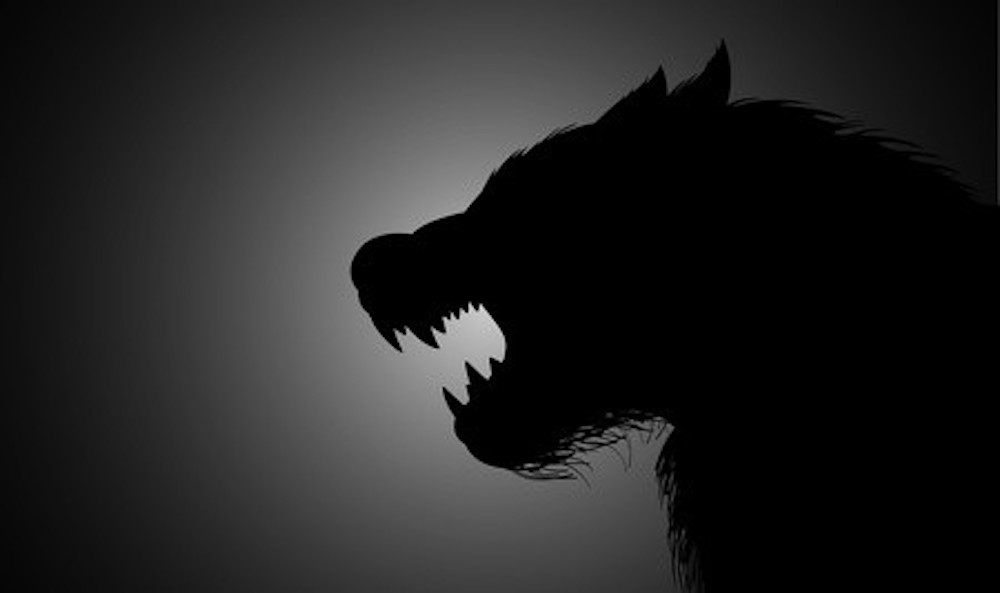
A creative gaggle of artistic entrepreneurs has built a team around a virtual (for now) brand under the label Therianthropy. The wines are just being released for the first time and feature Gamay, a couple of Cabernet Francs (one a natural style wine that should spark some debate, see review), a Riesling and a Chardonnay sourced from unique and varied terriors of Niagara with plans to expand that to top vineyards in Prince Edward County, Lake Erie North Shore and emerging regions like the Georgian Bay.
While the first batch of wines is Niagara centric, the Therianthropy partners have ambitious plans to build a winery and grow grapes in Creemore and base the shapeshifting brand there and introduce varieties such as Zweigelt and Grüner into the fold.
The winemaking approach of all Therianthropy wines includes: fruit from the best vineyards, wild fermentations, low intervention, low So2 (sulphur), no flavour or colour manipulation and long elevage.
“We’re a small negotiant/virtual winery for now, though we have plans to plant vines and build our own facility in 2021, says Tim Reed Manessy, the sales guru behind the brand. “Our fruit for 2018 and 2019 was sourced from the Wismer Family (Foxcroft) and Ian Bock’s eponymous vineyard. Our winemaker, David Eiberg, fell in love with an Ontarian human along with Ontarian terroir, and here we are.”
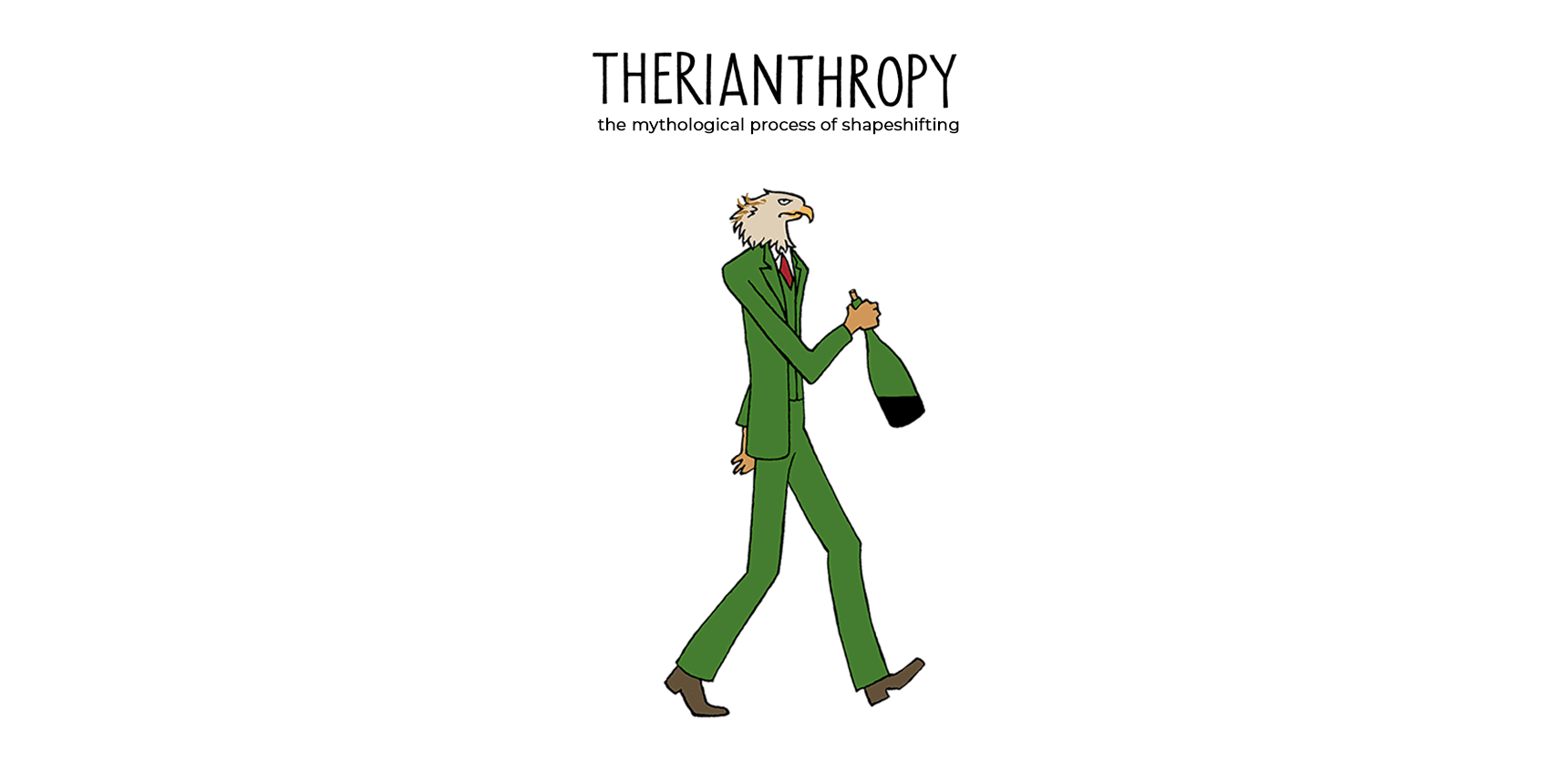
The first release, a 2018 David Eagle Gamay, quickly sold out, but the 2018 Claire de Lune Riesling, 2019 Bonnie Vivant Chardonnay, 2019 Le Maillot Cabernet Franc and 2018 The Negotiant Cabernet Franc are all now available for purchase, and reviewed below.
I had questions for David Eiberg (and who wouldn’t), former investment banker and now winemaker at Therianthropy, who morphs into David Eagle for this shapeshifting, eclectic brand the likes of which Ontario has never seen. Have a read of what he had to say (reviews and bios of the players follow).
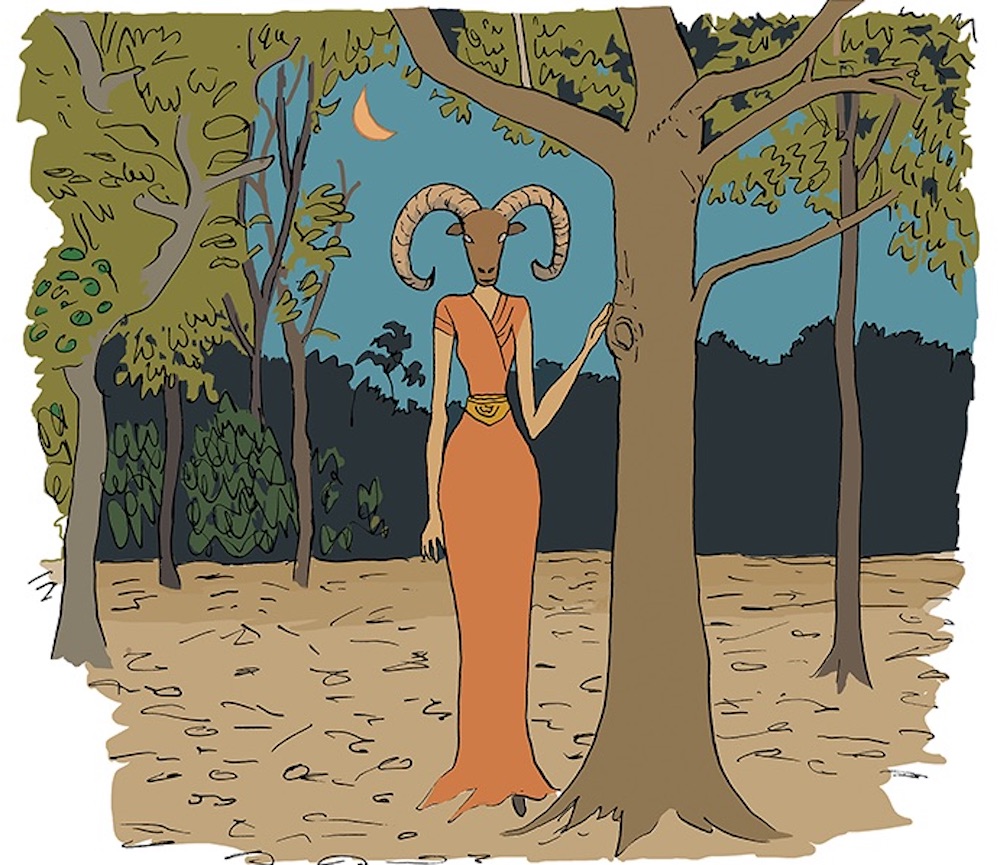
WINES IN NIAGARA: Ok, so a lot going on here. A new concept, a surprise new player on the Niagara wine scene and shapeshifting! Please explain the story behind the wine brand name, the drawings that come with that and the profile of the kind of wines you intend on making and being known for.
DAVID EIBERG: The whole thing was kind of reverse engineered. We started with an idea for David Eagle Gamay — based on my name, David Eiberg (Eiberg before it was changed to be more pronounceable in English was originally Örnberg — the Swedish for Eagle Mountain) as well as my much beloved Gamay grape. We had the vision of a grumpy birdman, trapped in a suit, dreaming of something more — a similar situation to my previous life in investment banking.
From that was born the idea of having, for every varietal, a character (half human/half animal — shapeshifters) that encompassed the personality of the varietal and so next the whimsical Claire de Lune was born for Riesling, and then the superhero Negotiant for Cabernet Franc, then the luxuriously self-indulgent Bonnie Viviant for Chardonnay. We have some new characters and varietals in our 2019 and 2020 wines, which we’ll drop as we release the wines.
The idea of these shapeshifters representing varietals also married perfectly with the miraculous shapeshifting that grapes go through to become wine — with the help of our little yeast and lactic bacteria friends.
So we had this group of individual characters representing varietals (and individual brands which we hope are strong enough to stand on their own two/four feet) which we needed to stable under a winery name, and after some long and hard thinking and searching we found the Therianthropy concept and adopted the name for our winery.
All this time, we were working with our friend and incredible Parisian artist, Michel Tolmer, to translate our ideas into art. None of our team can summon more than a stickman in our drawing, so we are forever grateful to Michel for bringing our world to life.
Now the most important part — the wines. We set out with the goal of promoting wines of Ontario, wines that show off the unique, varied and quality terroirs across Ontario and the different grapes that work best in those individual places. We wanted to delve deeper than just the Niagara Peninsula and so chose to make wines from single vineyards in sub-appellations across Ontario. Eventually our little stable will house wines from specific vineyards in Niagara, PEC, Lake Erie North Shore and emerging regions like the Georgian Bay. We focus on making low-intervention wines using wild fermentations, minimal S02, no flavour or colour manipulation and appropriate elevage. Eggs, stainless steel and neutral oak are our vessels of choice. The objective — to get the drinker as close to the fruit and terroir as possible. Boy, that is a lot! Hope I didn’t lose you.
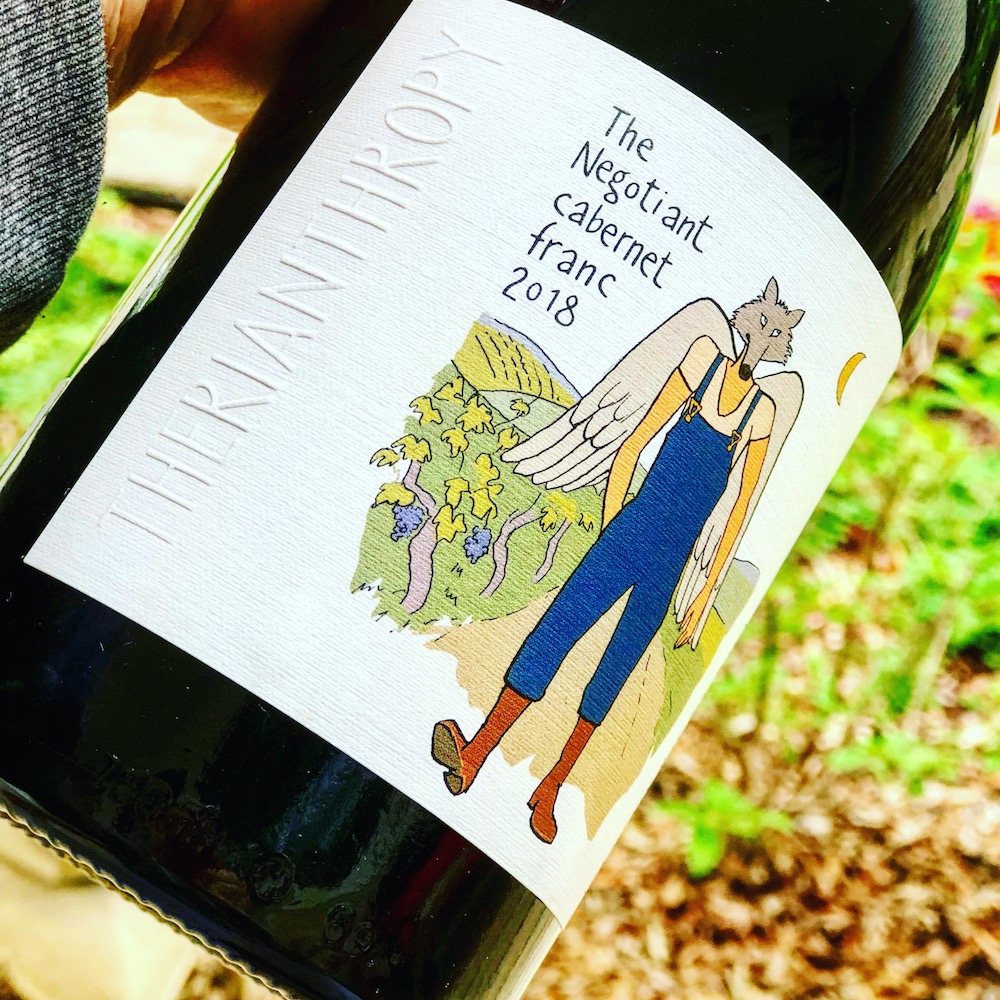
WIN: Your location is listed as Clearview and you mentioned in a previous email that your plans are to take the brand out of the virtual world and grow your own grapes and build a winery beginning in 2021. I’ve heard whispers the winery might be located in Creemore, but I’ve never trusted whispers before. Can you talk about your future plans?
EIBERG: Sometimes whispers can be trusted. We never set out to be in the virtual world and always planned to have our own winery as well as vineyard — one which complemented the fruit from our other growing program sites in Ontario. We also didn’t want to not make wine while going through the lengthy regulatory process to establish a new winery, so we just started virtually to, um… get started making some wine!
The location of our winery will be in Creemore and yes we should have it up and running by the spring of 2021. We are working hard at it right now and might even get it finished by the fall of this year. Fingers crossed! We chose the Georgian Bay to make our winery home because of the wonderful hills and well-drained, sandy-loam soils with high lime concentration (we are acid junkies). It used to be too cold to get vinifera ripe but that has changed of late with things getting a little warmer up north, also with the help of technology like geotextiles to protect the vines from winter damage. We also just love living here! In our home vineyard, we will grow varieties that we think are suited to the Creemore region, and so Zweigelt and Grüner are where we are starting, plus, of course, some Gamay. These will complement and not replace our growing programs in our other Ontario vineyard sites.

WIN: Everyone involved in the project (I think) has a clever bio with poetic support next to the bios on the website. There are even shapeshifting graphics for everyone. It really is a cool presentation. But what can you tell me about the partners in this venture and your reason for choosing Niagara to source your grapes?
EIBERG: Niagara as one of our growing regions chose itself. When it comes to Gamay, Cab Franc, Chardonnay and Riesling, I think these are world class in Niagara. Complemented by other varietals from our other Ontario appellations, I hope we can do our bit to promote the broader region. I think the secret is almost out which is good, and a little sad — I think more of Ontario’s wines will find their way offshore and less locally.
You’re right that the bios for the varietal characters on the website are related to the individuals partnering in this venture, but they are only loose associations; the characters are more representative of the wine varietals than the people in our partnership.
So with that, here’s our team:
David Eiberg – Wines, vines
and spreadsheets …
David was born in Zimbabwe… far from Canadian winters. He had an unwelcome natural talent for numbers and due to circumstances, and some urging on the part of well-intentioned teachers, he unfortunately found his way to investment banking. It would take David 20 years to realize the unfulfilled nature of his path. He remembered his early dream of making wine in the western Cape of South Africa. He recalled that the only constant throughout his life seemed to be his insatiable love of wine. It was when tasting some Chenin Blanc from PEC some several years ago that David decided he would study and practice the art of winemaking. He enrolled at UC Davis, completing their winemaking program, all the while doing harvests with talented winemakers in Burgundy, California, Oregon, South Africa and Canada.
Anastasia Phillips – Our creative voice
and thankless tank washer …
Anastasia is an actress with many TV and film credits, but she moonlights as David’s little winery gofer — which involves a lot of fetching and passing of things. She also oversees the creative direction of Therianthropy, helping to put the creative concepts into words. But she has developed a palate and sincere love of wine making, and maybe one day she’ll even make her own Cuvee. Watch out David Eagle!
Katharin Cowan – All Things
Customer Experience, and then some …
After 30 years in the financial services industry, Katharin decided it was time to focus on her real passions — food and wine. Establishing a gourmet picnic business gave her a taste of the food part, and studying wine at George Brown College put her onto a track for the second part. That’s where she met fellow co-conspirator Tim Reed Manessey, her instructor, who was so impressed with her knowledge of floral aromas that he insisted they work together in the future. That last part is fictional. What Katharin lacks in bona fide wine industry knowledge and experience, she makes up for in playing the ‘customer voice’ devil’s advocate role – What cheese would our customer’s like with that wine? Does the colour of our logo clash with my eyes? Critical questions all. But like all the Therians, she does what needs to get done – from packing boxes to ordering posters — and has become somewhat proficient with a tape gun.
Tim Reed Manessy – Sales and
Wine Industry Guru …
As a certified sommelier with 15+ years of experience in restaurants and hospitality it’s hard to stump Tim on anything that goes on in the industry. We’ve tried. By day, he is a sales representative and administrator for The Living Vine wine agency. In the evenings, he teaches wine part-time at George Brown College. And for the hours not already accounted for with all of that, somehow he also manages — on a regular non-stop basis — to impart his encyclopaedic knowledge to the world of Therianthropy. This extends to Ontario’s licensee world, the LCBO, the AGCO, direct-to-consumer sales channels — not to mention wine making in general. This makes him annoyingly valuable to the team.
And finally…
Mark Cuff– Sales, marketing, and
Hawaiian shirts … mainly Hawaiian shirts …
Mark Cuff founded The Living Vine, a wine importer/agency based in Toronto, Canada that represents only biodynamic, organic and natural wines in 2005. That was “before cowhorns were cool and organics the new norm,” The Living Vine’s mandate from the beginning was to introduce, educate and promote the sale of Biodynamic, Organic and Natural wines. The Living imports the largest selection of established Biodynamic & Organic estates in Ontario. Over the last 15 years, Mark has seen the Canadian market mature from niche to mainstream.
The Wines
All these wines can purchased online here.
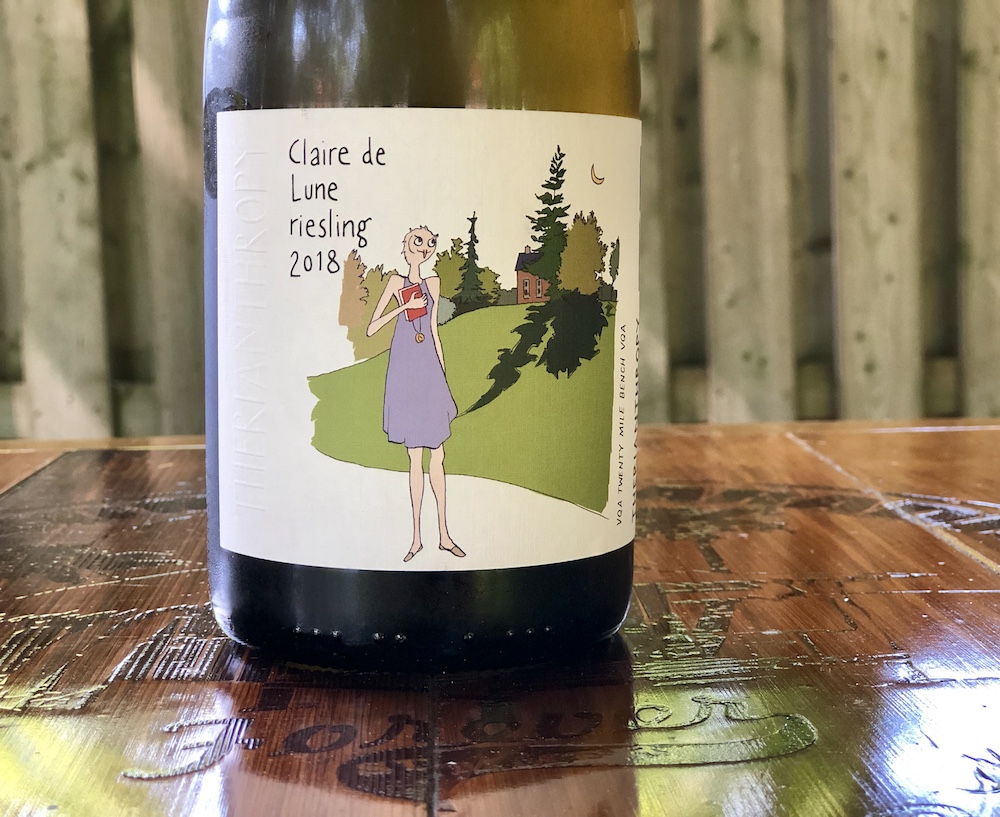
Therianthropy Claire de Lune Riesling 2018 ($30, 90 points) — Only 86 cases of this Foxcroft Vineyard Riesling from the Twenty Mile Bench were made. Winemaker David Eiberg says of this wine: “Riesling is a winemaker’s grape and I simply adore it. The expression I love most is Alsatian style Riesling — ripe, dry and very aromatic. I set out with that intention in 2018, but boy was it a fermentation that kept me awake at night with worry.” 10% of the grapes spent eight days on the skins with wild fermentation taking hold in 62 days. A small portion of the grapes was botrytised and the wine was finished unfined, unfiltered and the closure (same with all these wines) was made with recyclable and renewable plant-based composite with an organic beeswax button. It shows fresh lime, wet stone, peach, green apple and apricot notes on the nose. It’s juicy on the palate and chalky with lime for miles and miles to go with a saline/mineral backbone, a subtle note of ginger and a fresh, dry finish. Quite a different, but enjoyable take on Riesling.
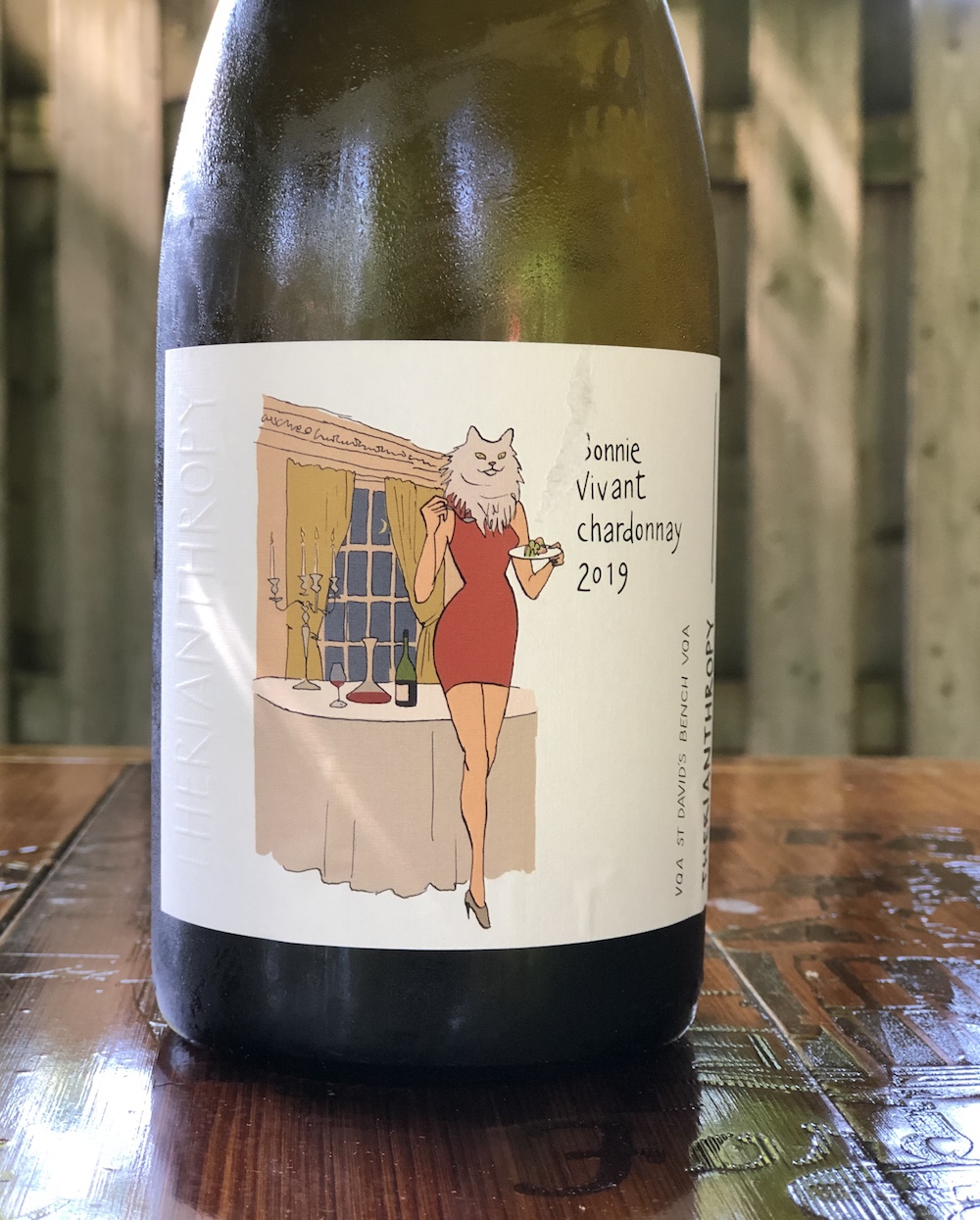
Therianthropy Bonnie Vivant Chardonnay 2019 ($30, 92 points) — Of this Chardonnay sourced from the Bock Vineyard on the St. David’s Bench, Eiberg says: “The expression of Chardonnay I love is Chablis, wonderful, unoaked Chablis. That was the inspiration for this wine and I love how it turned out — it gets me very, very excited.” So, no oak here, but wild fermentation, and full malo with no filtering or fining and finished with just 12.4% abv. It has a highly perfumed nose of white flowers, flint, pear, beexwax and salinity. It’s pure and delicious on the palate with succulent pear/quince, citrus, lovely texture, bright saline minerality and a fresh finessed finish.
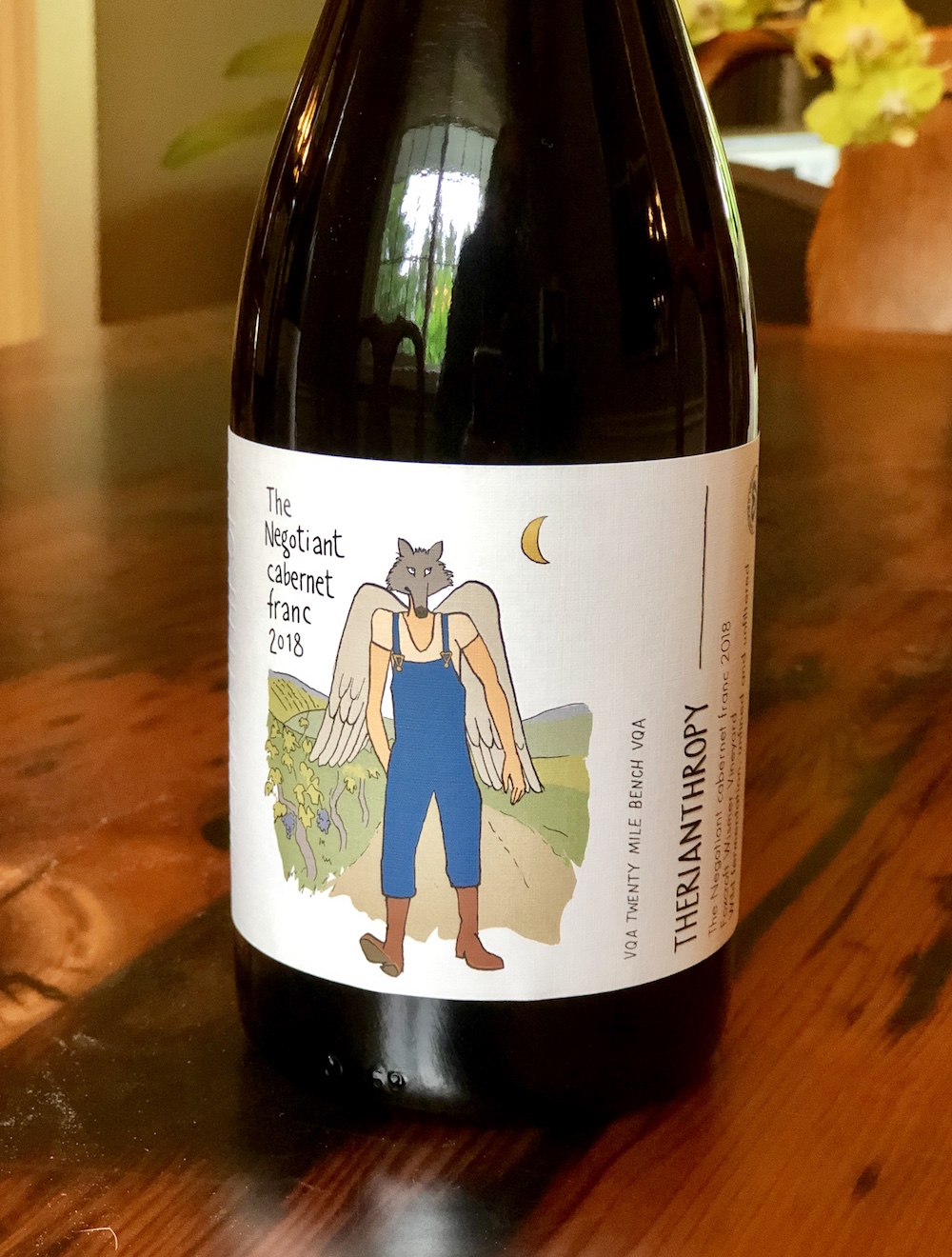
Therianthropy The Negotiant Cabernet Franc ($30, 92 points) — Of this Foxcroft Vineyard sourced CF, Eiberg says: “Cabernet Franc is becoming Ontario’s signature red grape for me. Our 2018 fruit showed depth and complexity from the get-go and it just got better and better as we let it age very slowly. The 80% inclusion of mature stems necessitated me putting on hip-waders for foot-stomping fun.” The wine spent 18 months in 225L neutral French oak barriques on the lees (but no stirring). It’s unfined and unfiltered. The nose shows brambly raspberries, cassis, savoury/meaty notes, red plums, integrated spices notes and a touch of mocha. It’s mouth-filling on the palate with red berries, some darker fruits, herbs, cocoa powder, plush tannins, spice and clove notes, complexity and a long, savoury but bright finish.
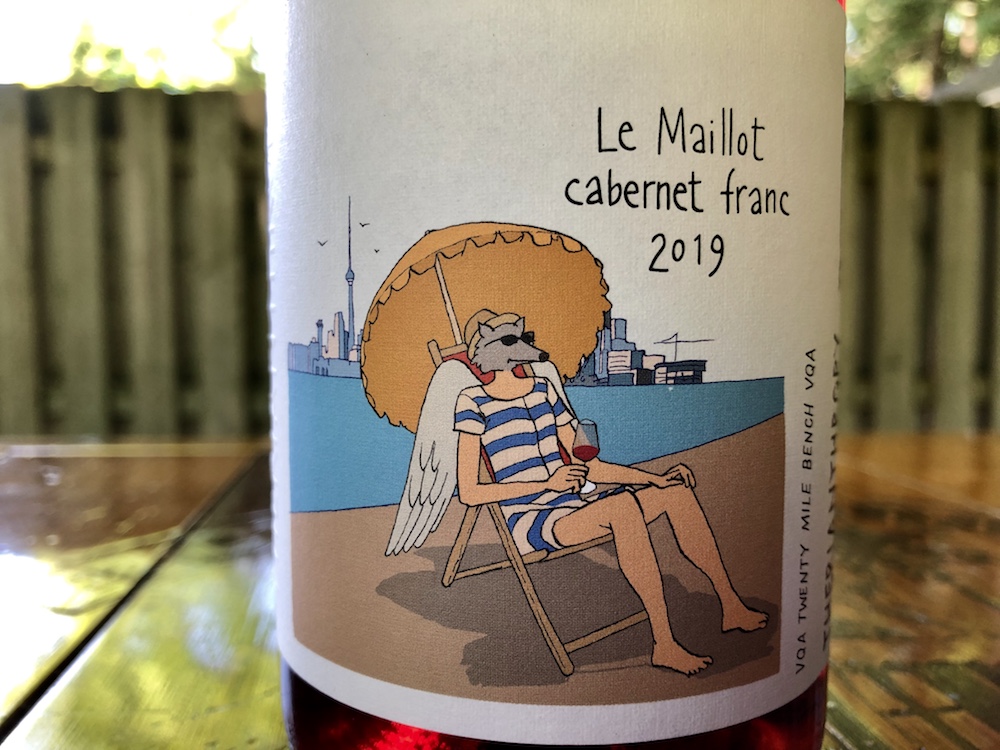
Therianthropy Le Maillot Cabernet Franc 2019 ($30) — This is also sourced from the Foxcroft Vineyard, but is a far different expression of Cabernet Franc than the one above. Says Eiberg: “The summer patio season is what we had in mind when deciding to make this light, easier-drinking Cabernet Franc. As I write this, the situation is somewhat different with us all hunkering down, trying not to touch our faces. I don’t know what the rest of summer will look like and I truly hope we are able to enjoy this wine together in groups.” The wine was 60% whole cluster pressed, wild fermented and 100% of the fruit went through malolactic fermentation. The only aging was in stainless steel tanks and it was finished unfined and unfiltered and saw very little sulphur added. If you want to start a heated debate with your wine geek friends, open this baby (slightly chilled) and wait for the sparks to fly. It’s in the “vin nature” vein and appears as a rosé in colour in the clear glass bottle. The nose is jolting and the reductive notes leap from the glass, then are replaced by red currants, brambly raspberries, herbs, earth and anise as the reduction blows off. It’s made in a quaffing, glou-glou style, stripped down to the bare bones and the palate offers gravelly, stony reductive notes, olives, dried sage, bracing acidity and cassis/raspberry fruits, meat, earth and a tangy/tingly finish. I shared this with a wine friend of mine whose opinion I value greatly, and he thought the reduction notes were too much and hard to overcome and wonders if others will feel the same way. His palate is impeccable and we quibble a lot about reduction in the modern world of winemaking where it is more and more prevalent and driven by young wine drinkers looking for that funky thang in their wines. Playing with minimal sulphur and natural winemaking is risky business, finding the sweet spot between perceived faults and funk is a balancing act and not one to trifle with. But with more and more fans of this glou-glou style out there, we will continue to have these healthy debates and winemakers will continue to push the limits. I have left the score on this wine blank and will leave it up to you to like it or not — because in the end, it is you who makes the decision on what you like and don’t like (I also would venture that the bottle you taste will be different than the one I tasted, such is the way with natural wines). I will say this, I enjoyed it a lot more than my wine friend did, but I have more tolerance (fondess?) for reduction, in fact I like it in small doses in many wines, natural or not. Would love to hear your thoughts on this wine, if you have tried it. I think it’s worthy of your attention no matter what your thoughts on natural or near-natural wines.


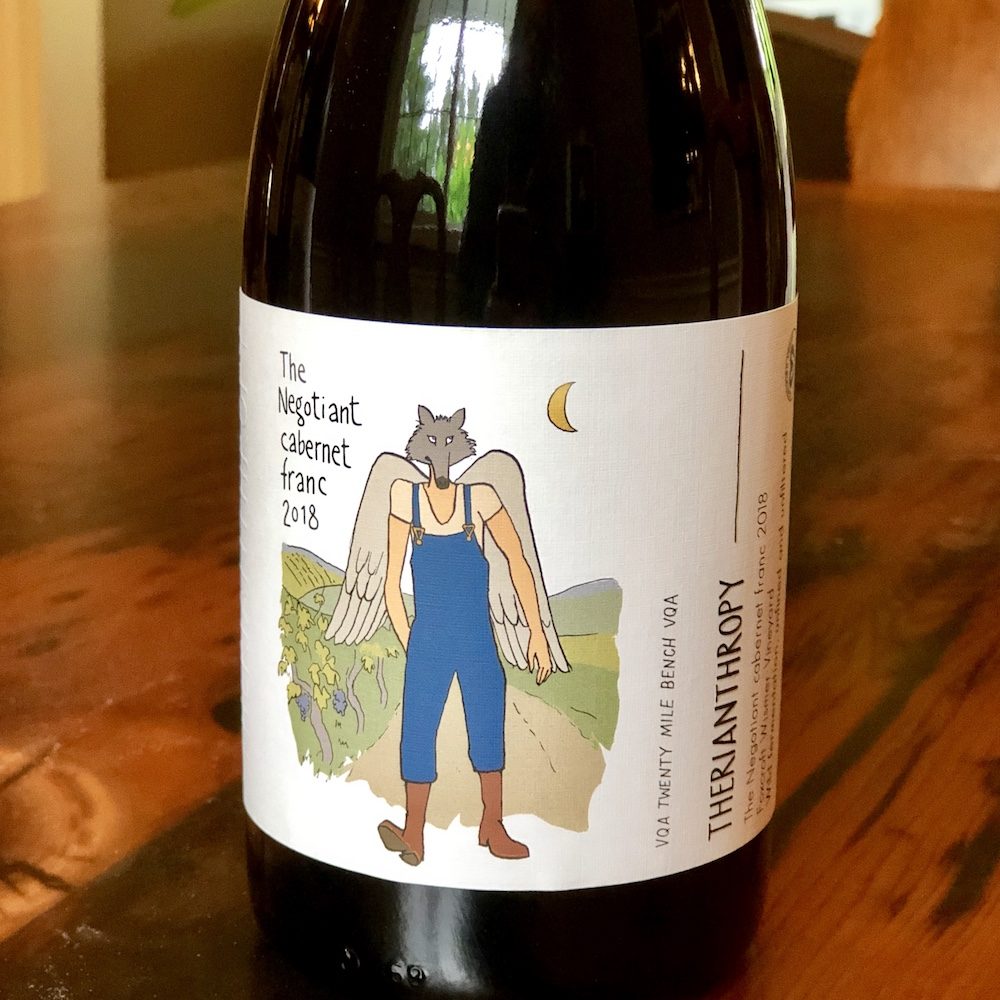



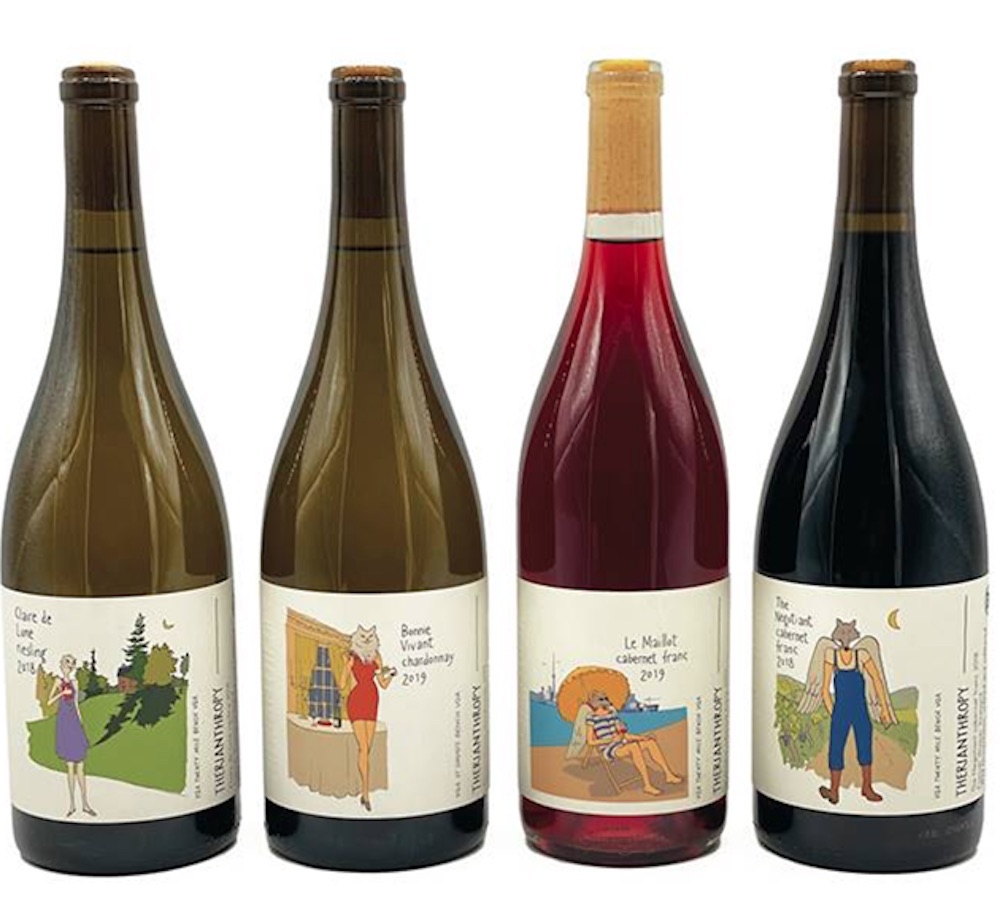

Comment here